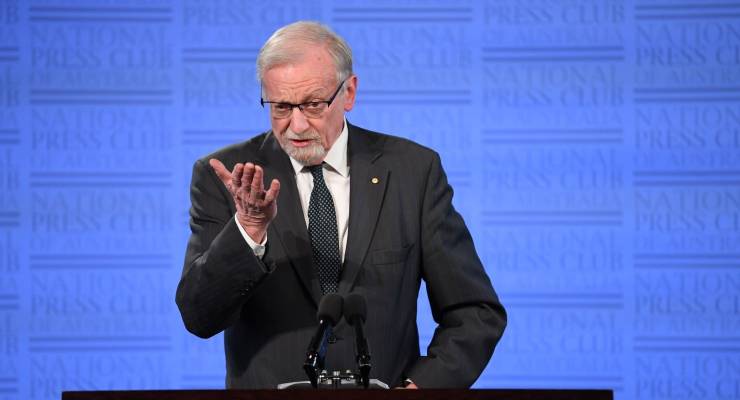
It currently ranks as one of the world’s great overlooked calamities. Starting at the end of October last year, an estimated 1.7 million Afghan refugees faced expulsion from Pakistan. In September 2023, the Pakistan government set a November 1 deadline for all Afghans in Pakistan “illegally” to leave voluntarily or face deportation back to Afghanistan.
In the weeks that followed, an estimated 10,000 people were sent back every day to Afghanistan and the Taliban rule many had fled in the first place, as Pakistan authorities raided neighbourhoods and destroyed homes to force them out.
Just as it was during the fall of Kabul in August 2021, Australia had accrued obligations to many people on the ground. Documents released under freedom of information (FOI) reveal some of the behind-the-scenes wrangling that occurred, including an intervention from former foreign affairs minister Gareth Evans.
On October 9, Evans contacted his successor Penny Wong to advocate specifically on behalf of roughly 60 Afghans who had worked on Australian-funded research projects.
Correspondence obtained under a FOI request made by Crikey to the Department of Foreign Affairs shows Evans asked Wong for an expedited “locally engaged employee” process — a designation necessary for the group to be successful in applying to immigrate to Australia — to be undertaken to get Afghan staff who had worked for the Australian Centre for International Agricultural Research into Australia’s immigration queue.
“The plight of the group is now extremely urgent,” he wrote. He detailed the harrowing treatment experienced by many of the staff, who were also working with Mexico-based not-for-profit International Maize and Wheat Improvement Centre (CIMMYT).
The Pakistani government has given all Afghan refugees until 31 October to leave Pakistan, even if they have [United Nations High Commissioner for Refugees]-issued documents. (CIMMYT began the UNHCR registration process, but UNHCR — under pressure from the Pakistani government — has now stopped issuing Proof of Registration cards, which are formally needed for refugees to have legal status and residency in Pakistan.)
Pakistan authorities “have begun sweeps and arrests and deportations, and are cracking down across the country,” he continued. “They have already arrested one of the group (later released) and are pressuring the others.”

Wong’s office passed this along to the department, which noted the need for a “quick ministerial response”.
In response, DFAT assistant secretary Steve Barraclough looped in Australian High Commissioner to Pakistan Neil Hawkins and shared a cable from the Islamabad office that went further into the politics on the ground — the blame apportioned to Afghans for Pakistan’s economic decline and domestic terrorist attacks.

Further emails show the dilemma the government faced regarding whether to share the names of the cohort with the Pakistan government to prevent their expulsion to Afghanistan before they could leave for Australia.

Ultimately, it was decided that the risks of not passing on the names outweighed the risks of doing so.
“I received a very positive response last October from those helping the CIMMYT employees, and in the absence of any further information to the contrary, I’m assuming all this is still on track,” Evans told Crikey. “So I’m very satisfied with Penny Wong’s response.”
The cables illustrate the general plight of Afghan refugees — those who did not have an international agency or former Australian foreign minister in their corner — and show that throughout October Australia had been lobbying, unsuccessfully, for an extension on the November 1 expulsion date, as well as for the removal of the US$830 (A$1,261) fee that Pakistan had imposed on exit permit applications.


DFAT has been approached for comment.








I have the impression Gareth Evans is a decent human being, unlike some in his former career.
Will Toxic Dutton dog whistle against an ethical action? The LNP let down the subcontractors employed in Kabul.
Not sure if this is really news? Focusing on communication between high profile Oz figures or personalities around geopolitics and refugees, but ignoring broader policies and analysis?